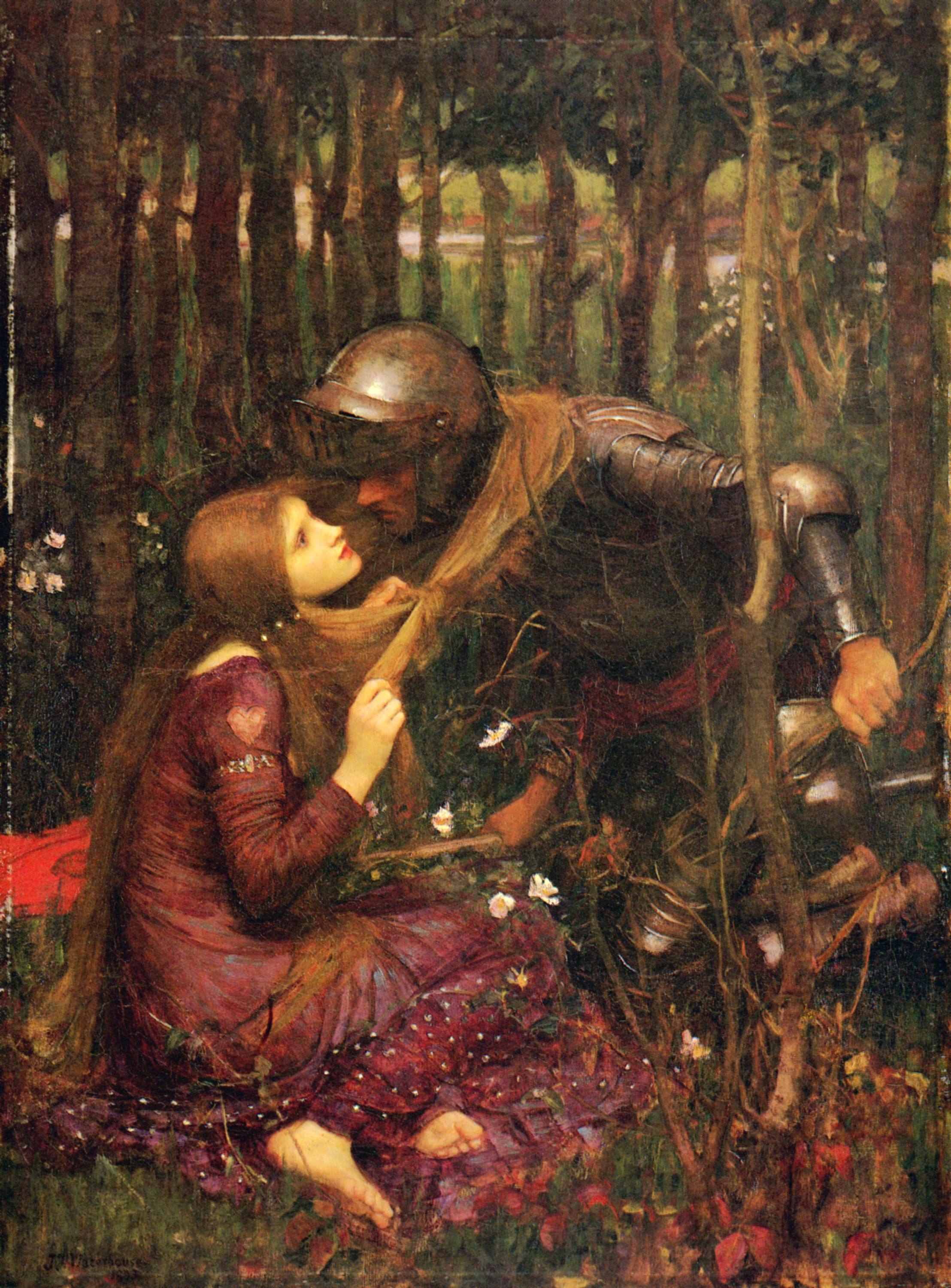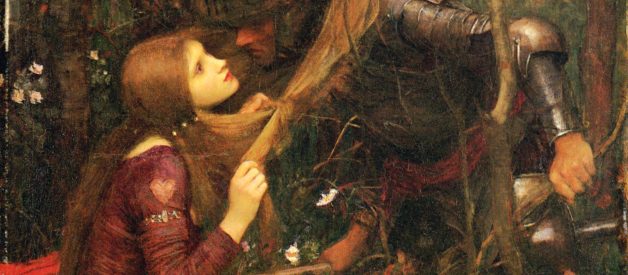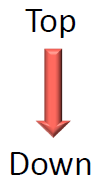Here?s a full analysis of the poem ?La Belle Dame sans Merci? including vocabulary, story summary, context, language techniques and structure / form devices. It?s tailored towards GCSE, IGCSE and A Level students on exam boards such as Edexcel, AQA, WJEC, OCR, CIE (Cambridge), CCEA and Eduqas. However, it?s also suitable for anyone studying the poem at a higher level.
Thanks for reading! If you find this document useful, you can take the full poetry course here:
Edexcel IGCSE Poetry: https://scrbbly.teachable.com/p/edexcel-igcse-poetry
 ?La Belle Dame sans Merci? by John William Waterhouse
?La Belle Dame sans Merci? by John William Waterhouse
THE POEM
O what can ail thee, knight-at-arms,
Alone and palely loitering?
The sedge has withered from the lake,
And no birds sing.
O what can ail thee, knight-at-arms,
So haggard and so woe-begone?
The squirrel?s granary is full,
And the harvest?s done.
I see a lily on thy brow,
With anguish moist and fever-dew,
And on thy cheeks a fading rose
Fast withereth too.
I met a lady in the meads,
Full beautiful ? a faery?s child,
Her hair was long, her foot was light,
And her eyes were wild.
I made a garland for her head,
And bracelets too, and fragrant zone;
She looked at me as she did love,
And made sweet moan.
I set her on my pacing steed,
And nothing else saw all day long,
For sidelong would she bend, and sing
A faery?s song.
She found me roots of relish sweet,
And honey wild, and manna-dew,
And sure in language strange she said ?
?I love thee true?.
She took me to her Elfin grot,
And there she wept and sighed full sore,
And there I shut her wild wild eyes
With kisses four.
And there she lulld me asleep,
And there I dreamed ? Ah! woe betide! ?
The latest dream I ever dreamt
On the cold hill side.
I saw pale kings and princes too,
Pale warriors, death-pale were they all;
They cried ? ?La Belle Dame sans Merci
Thee hath in thrall!?
I saw their starved lips in the gloam,
With horrid warning gapd wide,
And I awoke and found me here,
On the cold hill?s side.
And this is why I sojourn here,
Alone and palely loitering,
Though the sedge is withered from the lake,
And no birds sing.
Vocab List:
La belle dame sans merci ? the beautiful lady without mercy- the title would only be recognised by people who know french- most readers don?t realise she is dangerous/evil (?without mercy? means she has no kindness and is pure ruthless evil)
Sedge ? a type of grassy/leafy plant that grows by water
Haggard ? dishevelled / rough looking / old or tired looking
Grot ? grotto, a cave where humans or animals live
Manna-dew ? the food/nectar of the gods, said to be delicious and edible
In thrall ? under a spell / enthralled / captivated / under the power of ? ?thrall? has connotations of menace, evil, power, monstrosity (archaic ? slave, servant, captive)
Sojourn ? to stay / hang around / leisurely temporary stop in travel ? connotations of staying briefly, leisurely acts such as trips and holidays
Gloam- the time of day after sunset- going dark.
STORY/SUMMARY
In the first three stanzas, there is a sad and lonely knight who is ?loitering? on a hillside, who is encountered by a traveller (the speaker) who asks him what is wrong. The knight is visibly sick, sweating and turning pale.
In the fourth stanza, the narrative voice switches to the lonely knight himself; he explains that he met a lively and wild-looking woman in a meadow. She behaved in an uncivilised, animalistic way ? she had crazy eyes and loose, wild hair (which seems natural nowadays but would have been feared by readers at the time). The knight pities her because she seems to be in a distressed state, as a knight?s purpose is to protect vulnerable people (e.g. the idea of the heroic ?knight in shining armour?).
In the fifth stanza he is captivated by and begins courting (romancing) the lady ? she dresses the knight in jewellery made of wildflowers to mirror her wild character.
In the sixth stanza, the knight describes how he put her on his horse, and from that point on he can only see her because he is so focused on her and her singing; he becomes oblivious to his surroundings.
The seventh and eighth stanzas: the narrator is further captivated by the lady, she takes him back to her ?elfin grot? ? her fairy cave ? and he?s under her spell and stops thinking clearly; he wakes up on the side of a hill (the same place that the narrator found him) and it seems as though he has dreamt it all.
In the ninth, tenth and eleventh stanzas he sees the other victims of the lady ? ?pale kings and princes?, ?pale warriors? like himself, all opening mouths in pain, suffering and warning ? they shout to him and tell him he?s been caught by ?La Belle Dame sans Merci? (The beautiful lady without mercy).
The twelfth and final stanza is a repetition of the first stanza- the knight is trapped in a cyclical structure, where he is doomed to wander on the cold hill alone in a state like death, repeating his story to anyone who finds him.
TECHNIQUES
Anaphora ? the first two stanzas are spoken in a voice different from the knight?s and ask ?what can ail thee?, emphasising the loneliness of the knight
Pronoun shift ? second person in the first two stanzas, then first person as the knight tells his tale
Speaker/Voice ? the speaker of the poem directly addresses the knight and asks in a concerned tone about his condition, perhaps suggesting that the speaker is a woman
Femme Fatale ? the woman is a femme fatale figure, a dangerous woman who seems beautiful and vulnerable, but in fact is deceptive and seductive. She uses the knight?s kindness against him, but in an alternative interpretation we could argue that the knight is naive and it?s his own fault that he is vulnerable enough to be caught and manipulated by the women. We see that she is clever and skilful, he is one of many warriors, kings and princes that have become her victims ? she seems to target men of high power and status in particular.
Symbolism:
-?Harvest?s done?- the setting must be in October/November when it is cold, and ?no birds sing? suggests a lack of joy and happiness-barrenness and coldness
-The seasons skip forward to winter (the knight?s story is in summer) -plants are in full bloom in summer when the knight and lady are courting, they are later shown to be withered; meads is grassland and swampy which shows time of year, it?s symbolic because it shows his own spiritual beliefs and feelings ? optimistic in summer, pessimistic and despondent in winter (this is also pathetic fallacy, where the weather reflects the mood of the narrative)
-lilies are a symbol of death, they represent the restored innocence of a person?s soul after death when they return to a state of innocence and peace- the Knight either has a real lily flower on his forehead, or it is a symbol of a lily ? either way, it shows he is in a ghost like state, a deathly state where he is only half alive.
-The knight has red cheeks (a ?fading rose?) but his complexion is turning ?pale?, these indicate illness, the life and energy leaving him. The rose is fading; roses also symbolise passion and love, suggesting that his once passionate love for the lady has been replaced by sickness and depression.
– The ?garland? and ?bracelets? that the knight wears are from wild surroundings ? presumably the lady makes them out of plants and flowers that she finds in the meads ? these imitate a courtship ritual, where gifts are exchanged between potential suitors but there is a gender inversion here too, as she makes the flowers for him, they are more like spells than love tokens.
Volta ? stanza 11 is a volta, a turning point in the poem ? until this moment, his encounter with the lady has been enchantingly pleasant, but when he falls asleep his visions turn to images of horror and create a darker mood / tone. At this moment we realise the lady was tricking him all along.
Cyclical Structure- shows that the cycle of what the lady does is neverending, and the knight feels trapped in his mind (although not physically trapped)/ his soul is trapped because the lady stole his happiness-unsuccessful relationship
Caesura- ? ? Ah! woe betide!?- an interruption as though the memory is so shocking that he has to pause before carrying on with the sad part of the story, signals a disruption in the flow of the narrative which creates suspense before the sad ending
Semantic Field ? of sickness (perhaps lovesickness) ?haggard? ?pale? ?alone? ?sojourn? ?lulled? ?anguish? ?moist? suggests that the knight is in a state of constant suffering, and that the other men before him are in the same situation
CONTEXT
Keats is considered a ?Romantic poet?, who dealt with common Romantic themes/ ideas: nature, extremes of emotion, symbolism, god/religion as an extension of worshipping nature, love, death.
The poem was written in 1819, during the Georgian era.
At the time, hair that was loose and not in a neat bun was a sign of wildness/insanity so it should signal to the knight that something?s wrong with the woman, but instead he fixates on her vulnerability and naively thinks he can save her.
Theory of physiognomy was popular in the 1800s, it suggested that appearance reflects people?s inner personalities (at the time people who believed in this theory would understand that the knight is sick, the woman is unstable from the description of their appearances).
Chivalry- a medieval idea of male politeness-treating women well, honourable, educated, noble, protective ? positive masculine traits encouraged. The idea of the ?knight in shining armour? that rescues the ?damsel in distress? was highly popular in the medieval times (1000?1400s) but Keats in the 1800s was perhaps commenting on the outdatedness of this idea, how it wasn?t true in all cases ? not all women are weak, not all men are strong. The woman in the poem disrupts idea of chivalry because she is smarter than the knight and tricks/manipulates him
There was still a pervasive attitude in Keats? time that men were superior to women because they worked and were educated, and so had a duty to look after them as they were more vulnerable and less independent
Keats had a tragic love life himself- he fell in love with a woman but couldn?t marry her because he had less money than her-was socially unacceptable-we could say that he thinks the idea of chivalry is outdated and inaccurate, he shows this in poem-men can also be sensitive and are not always superior to women. In Keats? own life, he was a sensitive and emotional, as well as a sickly person who died very young at the age of 26, so we could argue that he sees himself as the knight.
THEMES
Enchantment/Magic
Nature
Love
Masculinity / Femininity > male vs female power
Sickness
Hubris (excessive pride / arrogance)
Suffering
Loss
Villains / Victims
Femme Fatale
Tragic heroes
Thanks for reading! If you find this document useful, you can take the full poetry course here:
Edexcel IGCSE Poetry: https://scrbbly.teachable.com/p/edexcel-igcse-poetry


